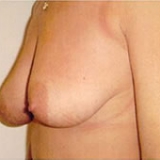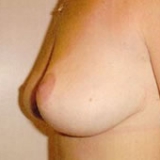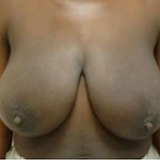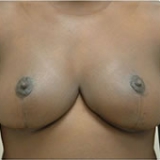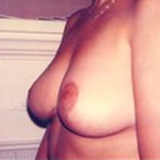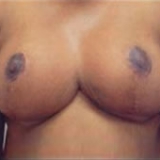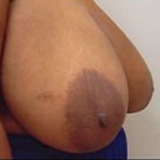Breast Reduction Surgery Ontario – We’re located in Barrie
Please be advised that Dr. Dickie is now performing OHIP approved breast reductions only for patients who wish to accompany their breast reduction with lateral flank liposuction.
Surgeries will be scheduled in our private surgical suite at Royal Centre of Plastic Surgery within a three month period.
Breast reduction surgery, also known as reduction mammaplasty, not only has cosmetic benefits but also can provide physical relief. Large breasts can affect a woman’s self-esteem and restrict how active she can be, which has a negative impact on her life. Women with pendulous breasts often seek a breast reduction procedure to relieve a variety of health problems such as shoulder pain, back and neck pain, skin irritation, skeletal deformities and breathing problems.
To reduce the overall size of heavy breasts, the procedure removes fat, glandular tissue and excess skin resulting in smaller, lighter and firmer breasts. The cosmetic surgeon also makes the areola (the darker pigmented skin around the nipple) smaller and often repositions it. With breast reduction cosmetic surgery individuals get breasts in proportion with the rest of their body.
How Is Breast Reduction Surgery Performed?
There are various surgical techniques used by plastic surgeons for a breast reduction. The technique used by Dr. Kenneth Dickie involves making an inverted-T incision that circles the areola, extends downward and follows the curve of the crease beneath the breast. Dr. Dickie removes excess glandular tissue, fatty tissue and skin to achieve the intended size then re-positions the nipple and areola. In cases where there is excess fat around the armpit or flank area, liposuction may be used to ensure the overall shape is aesthetically pleasing.
Usually, the nipples remain attached to their blood vessels and nerves to preserve sensitivity. However, if the breasts are very large, the nipples and areolas may have to be completely removed then grafted into a higher position. After excess skin and fatty tissue is removed, the plastic surgeon moves the nipple-areola complex to a higher position. There is a risk for decreased sensation in the nipple with this procedure.
Once the removal of tissue and positioning of the nipple has been completed and the remaining breast tissue reshaped, the incisions are stitched closed. Following the breast reduction surgery the patient may be instructed to wear a special surgical bra and some patients may have small tubes inserted to help drain fluid. The plastic surgeon will remove the tubes after a few days.
Breast reduction surgery is usually performed under general anesthesia or intravenous sedation.
How Long Is the Recovery from Breast Reduction?
While there is discomfort following the procedure, typically, breast reduction surgery is not a painful operation. With that said, you will be discharged home with pain medication prescription and postoperative instructions. After a few days, any pain and discomfort should be manageable. Most patients resume their normal activities within 10 days. Any strenuous activity or heavy lifting should be avoided for at least three to four weeks.
Is Breast Reduction Surgery Right for You?
Breast reduction surgery is intended for people who are troubled by the size and position of their breasts. Excessively large breasts can cause various health issues. Women who are restricted in their physical activity due to the discomfort or pain of large, pendulous breasts—particularly if the breasts are disproportionate with their body size—may also be good candidates for breast reduction surgery.
As with any surgery, it is important to consult with a registered plastic surgeon to discuss the risks associated with this cosmetic surgery procedure and to review your medical history.
Book a Consultation With The Breast Reduction Cosmetic Surgeon in Ontario
If large breasts are causing health problems, back, neck and shoulder pain and impeding your confidence, consider breast reduction. Contact the Royal Centre of Plastic Surgery to book your personal, cosmetic surgery consultation with Dr. Dickie. Let us help you be the best you can be. Our breast reduction surgeon is committed to helping you look and feel great. Serving Barrie, Collingwood, Sudbury and Toronto.
Other Frequently Asked Questions About Mammaplasty
Can breast reduction surgery cure back pain?
Although there are many options to reduce the pain, such as painkillers or buying appropriate bras, these could take a significant period of recovery time with very little to show as a result, so many see undergoing the surgery as the quickest and easiest way to resolve their pain and other issues arising from their large breasts.
According to research published by the American Society of Plastic Surgeons, out of 179 women with breasts larger than DD polled prior to breast reduction surgery, half of them had almost constant upper pain or pain in their necks, shoulders, or lower backs. After undergoing the surgical procedure, only 10 percent of women had these symptoms. That’s a major, and quick, reduction in pain across the board. You can read more on our blog here.
What type of person gets male breast reduction surgery?
Male breast reduction surgery involves the removal of excess breast tissue from a male patient’s chest.
There are a number of reasons why an excess of breast tissue can form in this part of a male’s body.
The most common reason that ‘man boobs’ form is obesity. Losing weight is not always the best solution to get rid of these unwanted breasts either. In fact, it is not uncommon for a male’s chest to sag if he has been obese in the past and then lost weight. It can also occur that excess breast tissue appears as a result of puberty and for it not to disappear during adulthood.
Although there is nothing dangerous or unhealthy about males having larger than normal breasts, they are regarded as being feminine by many parts of society. For these reasons, many men may feel insecure about their chests in these situations.
These men are prime candidates for male breast reduction surgery – a relatively quick, safe, and affordable procedure that has grown in popularity over the last few years. It involves a surgeon cutting into a patient’s chest and removing the excess breast tissue, resulting in the patient having a less fat, more traditionally masculine-looking chest. You can read more about male breast reduction surgery here.
How much is a breast reduction Surgery in Ontario?
According to CBC, the breast reduction procedure, technically known as reduction mammoplasty, involves removing fatty tissue from the breast to make it smaller, firmer and lighter. Breast reduction is covered by all provincial health plans, but the candidate for breast reduction must be approved based on criteria that vary from province to province. (For example, in Ontario, breast size is not sufficient grounds for coverage, there must be associated back or neck pain. In Nova Scotia, at least 500 grams per breast must be removed.) If the breast reduction is not covered by a provincial health plan, costs range from $4,500 to $6,500.”
How much does plastic surgery cost?
The cost of plastic surgery is dependent on various factors such as the geographic location of your surgery, the cost for the actual procedure, anesthesia, medication, amount of work involved, medical tests, surgical garments and other expenses related to the surgery. Plastic surgery is becoming more affordable because more doctors are offering financing plans for qualified borrowers.
Most cosmetic surgeons (doctors) are looking at financing as a way of increasing the number of patients they treat daily. The higher the number of clients they are able to service, the higher their income. The clients who get the services are only those who can pay the bill. In this case, doctors like other financial lenders, want to be certain that the candidate for breast reduction has the ability to pay. Therefore, they will assess your financial situation to ensure that you can afford it.



